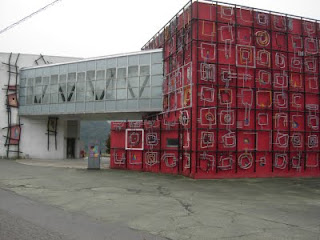
The innocent tetrapod, the only bulwark between Japanese coastal communities and destruction by winter storm or typhoon, receives the brunt of much anti-concrete criticism from western visitors and long-term residents alike. Yes, too much of Japan's cities and countryside has been paved. Yes, there are roads and bridges to nowhere. Yes, dams obstruct the natural flow of rivers whose waters could have been otherwise controlled or diverted during the monsoon season (there are many hydroelectric dams, though, and surely they are a cleaner energy source than fossil fuels). But as for the tetrapod, most of the armchair environmentalists so critical of them are profoundly ignorant: they have never spent a typhoon season or winter on the country's vulnerable coast. The serviceable tetrapod does not deserve to be the poster-child of the country's concrete excesses. For ten years I have lived only five minutes from the Sea of Japan in Niigata. Every summer and winter, especially during the latter season, the waters of the sea are lashed into a frothing fury. Were it not for the walls of tetrapods, the foreshore, with its public motorways and private properties, would be washed away. Hadrian needed his wall; the Chinese required theirs. The Japanese, who inhabit one of the world's most disaster-prone countries, deserve to protect it as they see fit.





















